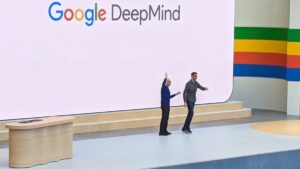Celebrating World Quantum Day: Understanding Superposition Through a Doodle

Understanding Quantum Computers: A New Era of Computing
The Basics of Classical Computers
Classical computers have been the backbone of modern technology for decades. They operate using bits, the smallest units of data, which can have one of two values: 0 or 1. This binary framework is at the heart of how these computers function, allowing them to perform calculations, run applications, and process data in a systematic way.
What Sets Quantum Computers Apart
In contrast to their classical counterparts, quantum computers leverage the principles of quantum mechanics to perform complex calculations more efficiently. The key element that distinguishes quantum computers is quantum bits, or qubits. Unlike classical bits, qubits can exist in multiple states at the same time, thanks to a property known as superposition.
Superposition Explained
Superposition allows qubits to represent both 0 and 1 simultaneously. This unique property enables quantum computers to process a vast amount of information at once, giving them an edge in solving complex problems that would take classical computers significantly longer. For instance, while a classical computer might check each possibility one by one, a quantum computer can explore many possibilities simultaneously due to superposition.
Visualizing Quantum Concepts
To celebrate World Quantum Day, Google Quantum AI team member Chuck Carlson and his design team created a Doodle that visually illustrates these quantum behaviors. By using engaging graphics, the Doodle aimed to demystify quantum concepts and make them more accessible to the general public. “We loved this idea of applying the behaviors of quantum to a Doodle,” Carlson notes, emphasizing the importance of creativity in science communication.
How Quantum Computers Work
Quantum computers operate on several key principles:
Superposition: As mentioned earlier, this allows qubits to be in multiple states at once, enabling parallel processing of data.
Entanglement: This refers to a phenomenon where pairs or groups of qubits become interconnected, such that the state of one qubit can depend on the state of another, regardless of the distance between them. This can facilitate exceptionally fast communication and data transfer.
- Quantum Interference: This concept is used to manipulate the probabilities of qubit states to achieve the desired outcome when solving problems.
Potential Applications of Quantum Computing
Quantum computing has the potential to revolutionize a variety of fields, including:
Cryptography: Quantum computers can crack encryption codes that would take classical computers millions of years to solve, prompting new approaches to data security.
Drug Discovery: They can simulate molecular interactions at unprecedented speeds, potentially leading to new pharmaceutical breakthroughs.
Optimization Problems: Industries like logistics and finance can benefit from quantum computing through improved optimization algorithms that can solve complex problems much faster than traditional methods.
- Artificial Intelligence: Quantum computing can enhance machine learning algorithms by processing vast amounts of data in shorter periods, leading to more sophisticated AI.
Challenges Ahead
Despite the promising potential of quantum computers, several challenges need addressing. Current quantum systems are often unstable, and maintaining qubits at superposition requires extremely low temperatures. Additionally, creating algorithms that effectively utilize quantum computing power is still a developing field.
The Future of Quantum Computing
As research continues, the goal is to make quantum computers more accessible and practical for everyday use. With companies and scientists globally pushing the boundaries of this technology, the future of computing looks vastly different from what we know today.
By understanding the fundamental differences between classical and quantum computers, as well as their potential applications, we are better prepared for a future where quantum technology plays an integral role in our lives.






